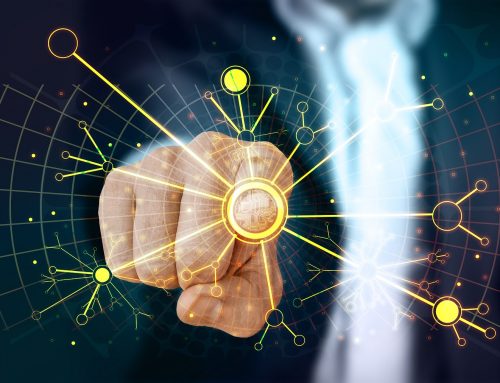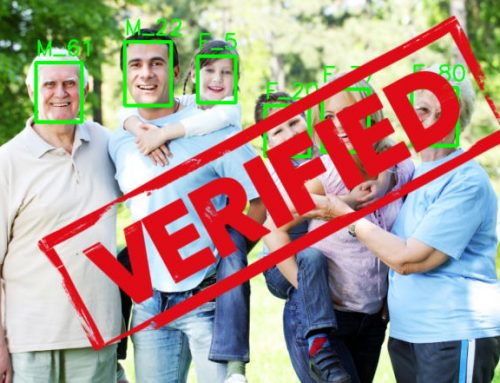Dorota Pielak – Legal Attorney / IP lawyer / Business lawyer at LGL:
Dear Grzegorz, as a Lead Data Scientist at Promity Ltd. you spearhead key AI projects. Firstly, let’s chat about what is AI exactly from a scientist’s perspective. We can hear or read about AI almost everywhere. Is AI really so ubiquitous?
Grzegorz Gwardys – Promity:
Unfortunately, AI term can be a bit misleading and may pose some challenges in terms of understanding. You can define it as a set of various fields of knowledge such as: fuzzy logic, evolutionary computing, neural networks or robotics, however that definition would be correct only at some level of generality; it won’t be enough to understand the essence of the issue. As engineers and IT experts, we have a problem with precisely defining where Artificial Intelligence literally begins.
Currently, the most popular services and devices utilizing AI models allow them to take better photos, recognize speech or personalize the offer based on the customer’s ‘attributes’ or behavior. However, it is worth recalling the concept of the Artificial Intelligence Effect (the so-called ‘AI Effect’), formulated by Pamela McCorduck, the author of several books on this subject. According to her, if a specific problem can be solved, it won’t be an AI challenge in essence. Therefore, strictly following McCorduck’s reasoning, the computer’s victory over Gary Kasparov in 1997 in a chess game was not so much won by Artificial Intelligence, but by a program simply finding the best possible solution.
It is also worth mentioning that, according to the pioneers of this discipline from the 1960s, Artificial Intelligence as a set of techniques was supposed to imitate human intelligence at the end of the last century, but in the forecasted time only the mentioned chess victory turned out to be a fulfilled prophecy.
So, I would say that we are currently living in the era of the so-called ‘weak’ Artificial Intelligence (aka Narrow AI) which is not fully conscious, nor having feelings or emotions. The imitation of human intelligence is limited here to operating in the area initially defined by a human. I am afraid we still have to wait for the so-called strong Artificial Intelligence (aka General AI), which exceeds the capabilities of the human mind.
LGL: Thank you, it is really interesting. I have heard that Promity’s Data Science team specializes in projects that take advantage of Deep Learning techniques for image analysis and object recognition. Could you please explain what Deep learning (DL) is all about?
Promity:
Let’s start with the fact that what is obvious to us humans, that is the ability to identify and associate objects, words or beings, is not so obvious to machines. The machine must be taught to recognize them, and this is what Deep Learning (DL) deals with. So, systems that right now help recognize images utilize Deep Learning models which absorb so-called labeled / annotated data. The goal of this process is to teach the computer to create statistical models which later can make a ‘guess’ what objects are visible in the photo possible. The data sets on which Artificial Intelligence models work are therefore not only photos, but also the information contained in the additional text file, so called labels, which provide information about the objects presented in the photos.
Before Deep Learning, the application of machine learning to image recognition was mainly about combining image processing techniques with machine learning algorithms. Various image characteristics, such as texture or color, were extracted using image processing techniques. Then, machine learning algorithms, based on the image features assigned to them, classify what is in the photos.
This paradigm was shattered in 2012, which can be considered as a breakthrough year for computer vison. It was then that the neural networks were successfully applied. During the ImageNet Large Scale Visual Recognition Challenge in 2012 (ILSVRC2012), the Toronto team showed an efficient implementation of a neural network running on GPU that allowed them not only to secure the first place in two of the three competition tasks, but they also significantly distanced competitors in terms of the precision of the results of image classification (& object detection), which was considered then as a considerable technical breakthrough. So, 2012 was the year of the transition in machine learning – the neural networks were utilized not only in computer vision, but later also in natural language and audio processing.
Deep Learning is a sub-field of machine learning and uses neural networks to complete the task.
The key difference between the initial paradigm of machine learning and the new one is that specialists have not to think any more about the best possible image characteristics which could be applied to the machine. The Deep Learning model is capable of transferring this burden to the machine itself, or more precisely to neural networks, which must determine these characteristics by themselves, analyzing the countless amounts of data in the layers of neurons. As the results have shown so far, neural networks have been better than humans at this! However, as in the preliminary paradigm, this new model also requires data. And neural networks generally require even more annotated data.
This, in result, creates challenges of process, cost and operational nature, as gathering the right amount of useful data is only part of the task. The key element is to ensure the data set is of proper quality. If, for example, you have 10 million files with the .jpg extension and you do not know what is in these photos (because the labels are missing), firstly you need to carry out a tedious process of data preparation (e.g. by annotating the photos) so that they can be later applied to learning neural networks.
LGL: That sounds like a real challenge. However, we will talk more about data sets, as an essential element of machine and deep learning models, in the next espiode of our cycle. It is an extensive and multi-threaded topic in itself. Do you see any other key challenges within the field of Artificial Intelligence that the technology industry has to overcome?
Promity:
I would say there are some challenges of business nature. On the one hand, we see the enormous business’s appetite for this type of solution; but at the same time, their expectations are quite often excessive, and even unrealistic, taking into account the current AI technical capabilities. For example, current image classification solutions work well for thousands of different types of objects but business often expects, for example, 10.000 classes, and additionally 100% accuracy.
On the other hand, it can be sometimes beneficial as these, often-unrealistic expectations, enforce a close cooperation between the scientific community and the industry. However, we must bear in mind that AI (or rather, as I insisted before, Machine Learning and Deep Learning) will not always be the fastest solution you can apply to a data-driven business or an operational problem. For now, we live in the era of ‘Weak Artificial Intelligence’, which scope is rather limited. Therefore, mutual cooperation and understanding is necessary: AI engineers must understand business needs, and business unit managers must understand current AI capabilities.

LGL: I can only say it works quite similarly in the sector of legal services. It is essential that a lawyer well understands their client’s business needs and is familiar with the specifics of a given industry. A Client, on the other hand, must understand the role of a lawyer and counselor. This leads me to another question, not purely technological one: as regards your work related to Deep Learning projects at Promity – do you sometimes encounter issues that you feel would be worth consulting with a lawyer?
Promity:
Dorota thank you for this question. The answer is simple – of course! For example, it would be good to know, to what extent law could facilitate protection of AI solutions as intellectual property of a company?
We are super keen to protect our work – AI projects can be very time consuming, as well as they require engagement of highly skilled professionals, not only those specializing in the field of AI, who are in high demand currently, but also so-called domain experts.
One of our recent projects can be a clear example of that. Our CalfCam project, which is funded by the National Centre of Research and Development, aims to create a device which would improve the well-being of cattle through an automatic analysis of their behavior and pose. The device will constitute a conglomerate of dedicated neural networks working in effective embedded systems (so called edge), with a help of many different sensors, which will significantly improve detection of an object, including its characteristics and behavior. We believe it will be, at least in Poland, a truly unique system a cow’s pose detection.
And here comes my question: I’ve been wondering, if and how this project could be legally protected from copying, so that Promity Ltd. holds its competitive advantage? It is worthwhile to mention that this project has been built almost entirely from scratch by our hard-working engineers.
And secondly, would it be possible to refer to our project as an invention – legally wise – and seek its protection as such?
LGL:
Whether or not the project you’ve just described could be an invention as understood by intellectual property law, should not be discussed here in the blog. I will explain why, in a moment 🙂
Let’s start with a general notion that information technology solutions in general, can indeed be subject to legal protection. Potentially, there can be multiple legal regimes applicable. In order to explain, what such protection would entail in each case and how it would work, it is important to first identify and understand the technology behind AI.
Despite the imperfection of the term “artificial intelligence” from the scientific point of view, mentioned be you, in the legal field a structured understanding of AI is being forged as we speak. A project of the definition of AI systems can be found in the proposal for a REGULATION OF THE EUROPEAN PARLIAMENT AND OF THE COUNCIL LAYING DOWN HARMONISED RULES ON ARTIFICIAL INTELLIGENCE (ARTIFICIAL INTELLIGENCE ACT) AND AMENDING CERTAIN UNION LEGISLATIVE ACTS, submitted by the European Commission in 2021. We previously wrote about that proposed act on our blog (https://lgl-iplaw.pl/warto-wiedziec/).
According to this proposal, an AI system is a computer program (software), although a specific one. It has to meet certain criteria, which are also described in the draft Regulation.
Obviously, I don’t need to explain to you the characteristics of a computer program (software). For the sake of our readers, let me however briefly explain it for better understanding of AI’s legal aspects.
A computer program is a portion of instructions for the machine, created by a human (a programmer) by means of using a certain programming language. These instructions make a source code. It is a text which instructs the computer what to do and how to do it. In order for the program to work on a computer, a source code is subsequently translated to an object code; an object code is recorded in an internal language of a computer.
Generally, a computer program can be subject to copyright protection, as an individual piece of work. It means that the author is exclusively entitled to commercialize the work, namely to use and dispose of the code in the exploitation fields. It is a bit different in case of employees’ coding creation, where based on article 74 item 3 of the Act on copyright and related rights, it is the employer who automatically acquires economic copyrights to a code created by their employee, unless the parties decided otherwise. Copyright protection is effective by the power of law itself, once an individual work is created; no registration is required. If several coders were engaged and each of them contributed creatively, they will be considered co-authors of the same code. It is essential that a producer or a distributor of an AI system validly acquires economic copyrights from all possible author of the scripts; it is a necessary condition to be able to use and commercialize the software.
The fact that a programming work is subject to copyrights, is twofold. Firstly, copyrights are exclusive, which means that no one except the author is entitled to use them, thus the latter has legal grounds to oppose possible infringements, especially copying of the code. Secondly, ownership of copyright is a genuine economic asset which can generate revenues through licenses one can put in place so that third parties use the code in exchange for license fees.
As for a possible patent protection on the other hand – as this relates to your question, whether or not the CalfCam project could be an invention – unlike copyright, it is not automatic. Patents are granted by a respective patent office (e.g. Patent Office in Poland or European Patent Office EPO) after a completion of a thorough investigation of the application. A patent is established via an administrative decision issued by a patent office. It is important to note that it is not quite easy or straightforward to obtain a patent.
A patent protects an invention. According to industrial property law, an invention is a new technical solution which meets the inventive step criterion and is susceptible of industrial application. Novelty of an invention means that it has not previously been known to science. To access that, everything what has been published to date in the respective area is taken under consideration. This is a very important factor which means that any disclosure of a project prior to filing the patent application, e.g. on a company website or during an industry event, will irreversibly deprive us of a possibility to obtain a patent!! Any potential invention we may wish to patent, must be therefore kept in a strict confidentiality; this is precisely the reason we can’t discuss the details of your project in public😊.
The inventive step criterion is an interesting one. It is also referred to as non-obviousness. In the eyes of an expert, a technical solution cannot result in an obvious way from the state of science. By an expert we understand a specialist in a given field, but one who has a rather standard or general knowledge of the subject. Non-obviousness can be manifested through a surprise for an expert, solution of a technical problem unsolved to date, fulfillment of a new social need or efficiency improvement.
Finally, an invention must be susceptible of industrial application. This means it is suitable for practical implementation, functional, and serves a particular and practical purpose. This condition seems relatively easy to fulfill, considering current cases of practical application of AI systems in the industry.
Going full circle and coming back to a computer program in AI – a program itself will not be considered an invention. What could be patented within an AI system, would rather be an invention in a broader sense, supported by a computer program which makes a part of it.
Promity: Thank you Dorota. I wonder, however, what does a patent mean practically? How we could benefit from taking out a patent ?
LGL:
Like in the case of copyrights, it entitles the owner to exclusively use the patented solution for commercial or professional purpose. As a consequence, it can bring revenue to the company through possible licenses. A patent is practically a monopoly for the invention in question.
We have to bear in mind though, that all rights of industrial property are territorial. It means that the monopoly (granted by a respective patent office) is effective only in the territory for which the protection was applied for. If e.g. we have a patent granted by the Polish Patent Office, we are not able to restrict others from using the invention under such patent on the territory of France or Germany, for instance.
Also, patent protection is limited as for its duration in time. It lasts for 20 years and this period cannot be prolonged; after 20 years have lapsed, a patent expires. In the same time, trademark protection can be prolonged consecutively, practically on an ‘evergreen basis’.
Promity: Hmm, and why it is different in case of patents?
LGL:
The aim is not to create a never-ending monopoly to use a useful technical solution, in favor of one commercial entity only. Patents apply to results of scientific activity, and science should be available for everyone. For this, the creators of patent law have decided that after a certain period of a legitimate exclusivity in favor of the creator or investor of the invention, the creation must enter into the public domain and bring benefits to the whole society.
We can refer to the patent system as to a social contract of sort. In exchange for the possibility to exclusively commercialize an invention during some time, an inventor must disclose the creation. If an inventor chose not to disclose their work, a patent could never be granted. A possibility of patenting one’s invention and thus, obtaining a monopoly for its profits, comes as an incentive for an inventor, to – possibly- bring to the light other technology they may have created. This, in the long term contributes to the development of science and shows how patents really support technical innovation. If it hadn’t been for patents, innovators would have to keep their valuable work in secret so that no one would copy it. It is safe to assume that any attempt to share a technical innovation with the public would probably end with the competitors implementing the same solutions.
Promity: I understand. Does it mean that after these 20 years of patent protection anyone could copy an innovative creation of a company?
LGL:
Not necessarily. Or rather, it depends… Economic copyrights we have been speaking of, generally last for the life of the author plus an additional 70 years.
Copyright protection and patent protection are independent from each other and run alongside. One does not exclude another. After a hypothetical patent for an AI solution will have expired, the computer program incorporated in the system will still be subject to copyright protection. Then, it must be noted that patent protection and copyright protection shall not overlap in terms of the object protected.
Copyright applies only to a computer program, namely the code in which the program was encrypted. We can compare this to the model of copyright protection of textual works, because a source code is in fact a sort of a text. As long as copyrights are in force, no one can legally implement an identical code. But as we’ve mentioned, a program itself cannot be protected by a patent. It would rather be the application of the program within an AI solution, as long as it meets the respective criteria, that could be subject to patent protection. Copyrights cover an individual form through which a creation is manifested and not ways of working, nor a method, or a technical approach/solution to the outstanding problem. Those latest forms of intellectual work could be protected by means of a patent, a utility model, or a confidential know-how of a company.
At this stage we can also briefly mention industrial design, which could apply to & protect a physical form of the interface of a device (it’s visual angle), as long as such form is new and individual.
Some other ways to ‘protect an idea’ were explained on LGL’s blog (https://lgl-iplaw.pl/warto-wiedziec/) – for example we wrote about know-how protection related to a company (trade) secret.



